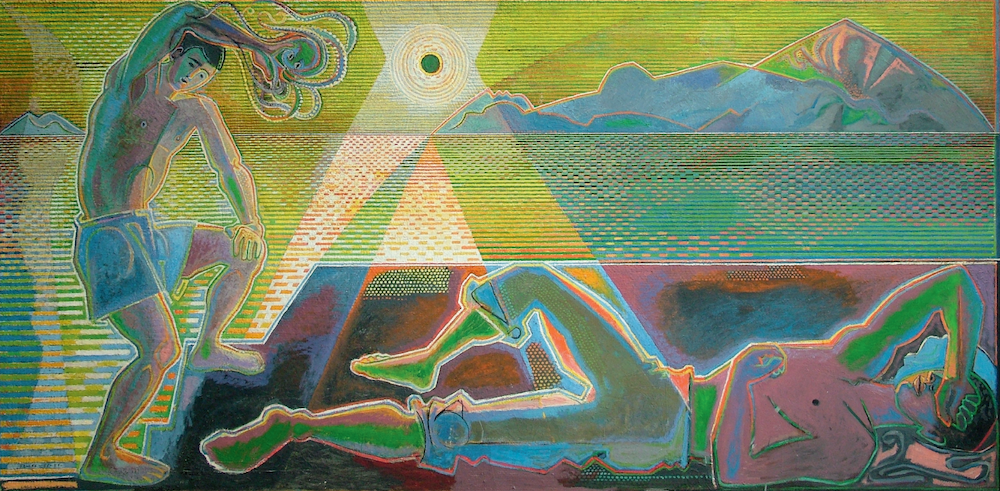John Craxton: A Modern Odyssey | Pallant House Gallery
The painter John Craxton escaped postwar Britain, moving to Greece in the late 1940s. He settled in Crete, and stayed there, off and on, until his death in 2009. His specialist subjects became what he chose to see around him in his new home: light-filled landscapes, beautiful sailors and shepherds, cheeky cats and goats.
Craxton’s received his first retrospective in decades in his home country, currently on at Pallent House Gallery in Chichester. The show isn’t exactly challenging and shocking. But then again, how could it be? The artist was easy-going, out for a good time, and above all protected by his background and connections.
Born into upper middle class Bohemia - and a former Chichester choirboy - he was an early friend and flatmate of Lucian Freud, during which time in London he painted gloomy grey still lives. Later, his circle of intimates included Margot Fonteyn, Patrick Leigh Fermor and, bizarrely, Barry Humphries: the bookplate Craxton designed for the latter is on show at Pallant House.
Craxton only sold work when he felt like it, lived on a shoestring, embraced his life of ease in the sun. He’s an unusual example of an artist whose materials got humbler as his life went on: oil on canvas in London, generally tempera on board in Crete, the chalky matt surface all the better to capture the sunlight.

Two Figures and Setting Sun (1952-1967). Credit: Estate of John Craxton
Some of the work is quite beautiful. The example above was originally shown in a (pretty unsuccessful, but the artist didn’t much care) 1960s retrospective at the Whitechapel Gallery. Two beautiful men gambol in the sunlight, against a backdrop of sea, sun and mountain. The poses seem to be taken from antiquity. The octopus brandished by one of the men adds to the surreal atmosphere, though there’s nothing really unsettling about the scene. We are comforted, and warmed - a common feeling for Craxton’s viewers.
Looking through the tags on this site, I realise that I featured Pallant House, which hosted the Craxton show, once before on this site. In 2011, it put together an Edward Burra retrospective, which I featured in one of the posts I wrote in lockdown, when, not being able to visit any galleries, I wrote instead about works that were on my mind, and in my imagination.
Burra was a superficially similar artist to Craxton: a gay eccentric who was active in the middle of the 20th century, a British outsider who dreamed of foreign climes. But he was definitely a challenge: Burra was a housebound recluse who travelled in his imagination while Craxton was sociable and travelled for real; he had darker and rougher edges; he painted his hookers and dockside workers with a sort of lascivious glee, compared to the more decorous beauty of Craxton’s Greek gods. Burra didn’t seem ever to have acted on his desires; Craxton certainly did. The two men didn’t meet, weren’t friends - or, at least, Burra isn’t mentioned in Ian Collins’ recent biography of Craxton.
This is all biographical trivia, anyway. Both artists left behind memorable work. They are together in my mind, though Craxton’s position is still being sorted through, while Burra’s is secure. Writing about the show hasn’t fixed him in my mind at all. On one hand, there’s the pleasure-provoking, unchallenging beauty of his sunny tempera paint. On the other, a nagging feeling that it’s all superficial gestures from a don’t-care good-time-guy.
John Craxton: A Modern Odyssey is at Pallant House Gallery (Chichester). 28 October 2023 - 21 April 2024